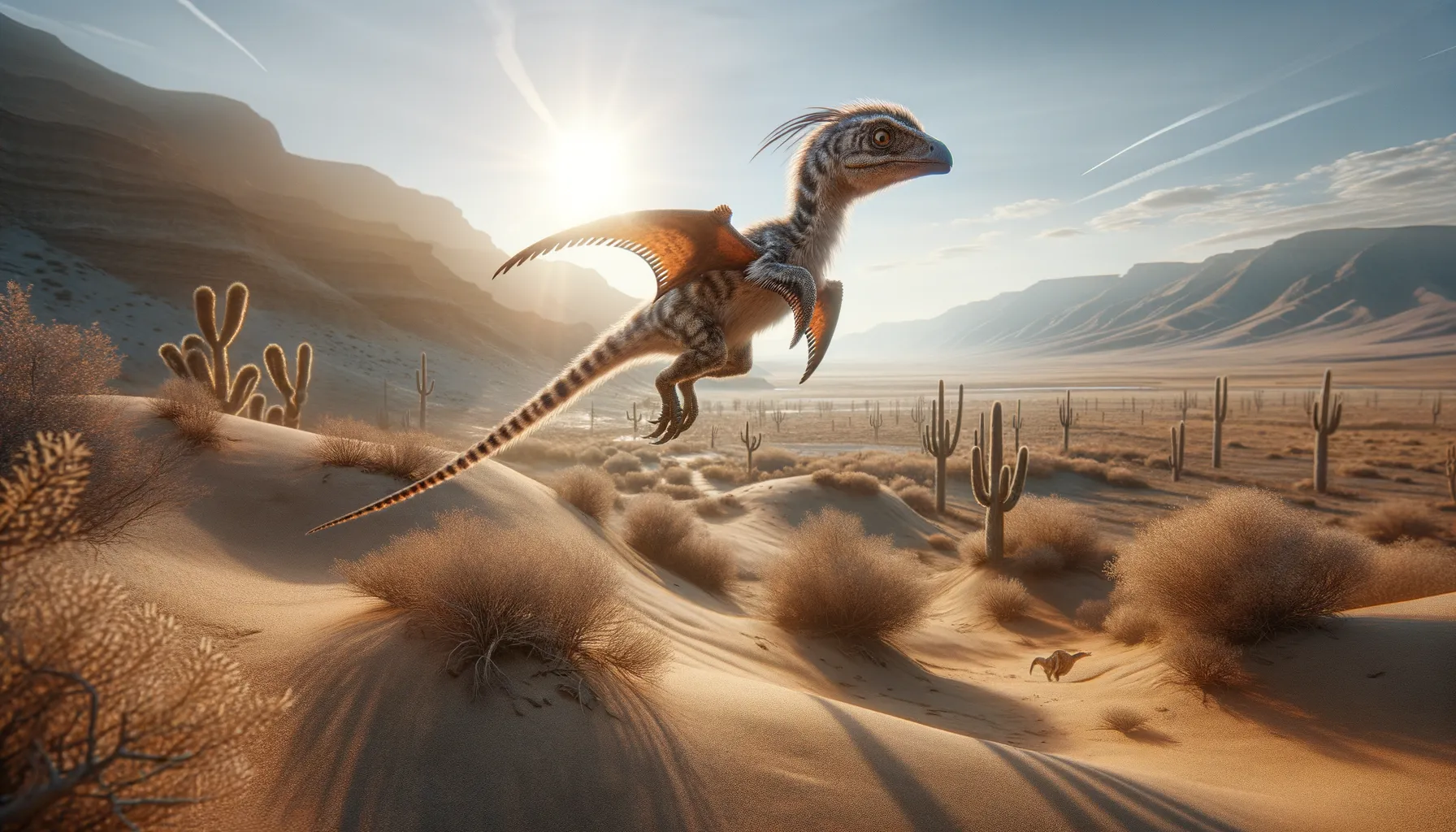
Gobipteryx
The ancient avian of the Gobi Desert skies.
Period
Cretaceous
Length
Approximately 10 to 12 inches long.
Height
Comparable to modern small birds.
Weight
Very lightweight due to small size.
Gobipteryx was a small bird-like dinosaur that lived during the Late Cretaceous period. It was discovered in Mongolia's Gobi Desert and is known for its bird-like characteristics and potential for flight or gliding. The fossils found have provided insights into its lifestyle and adaptations to its environment.
Diet
Gobipteryx likely had an omnivorous diet, feeding on insects, seeds, and small creatures. Its diet may have varied seasonally depending on the availability of food resources.
Hunting
It probably hunted small insects using quick pecks and short flights to capture its prey. Gobipteryx may have also foraged for seeds and other small plant material in its environment.
Environmental challenges
Gobipteryx faced challenges from predators, requiring quick maneuvers and possibly flight to escape. The arid environment of the Gobi Desert also meant it had to adapt to limited water availability. Seasonal climate changes would have affected its food sources, requiring adaptability in its diet.
Speed
Likely slow, suitable for short bursts.
Lifespan
Estimated to be several years.
First discovery
Found in the 1970s in Mongolia.
Fun Facts
- Gobipteryx was a small bird-like dinosaur that lived during the late Cretaceous period.
- Its fossils were first discovered in the Gobi Desert, which is how it got its name.
- Gobipteryx had a beak-like snout, hinting at its bird-like evolution.
- Despite its bird-like features, Gobipteryx was not capable of flight.
- This dinosaur was likely a ground-dweller, using its strong legs to move quickly.
- Gobipteryx had characteristics of both modern birds and dinosaurs, showcasing the evolutionary link.
- It lived over 70 million years ago, a time when many bird-like dinosaurs existed.
Growth and Development
Gobipteryx likely experienced rapid growth, with juveniles quickly maturing into adulthood. Its skeleton shows adaptations that suggest an active lifestyle from an early age. The development of its feathers and potential flight capabilities may have played a crucial role in its survival.
Habitat
Gobipteryx inhabited the arid regions of the Gobi Desert, an area characterized by sand dunes and sparse vegetation. It adapted to living in a harsh climate with limited water sources. The environment offered nesting sites and diverse prey opportunities.
Interaction with other species
Gobipteryx may have coexisted with a variety of other small dinosaurs and reptiles. Its small size reduced competition for resources, but it had to remain vigilant against larger predators. Fossil evidence indicates that its environment was rich in biodiversity.
Natural lifespan
Gobipteryx likely had a natural lifespan similar to small birds.
Reproduction
Gobipteryx may have laid eggs, like other bird-like dinosaurs. Nesting likely occurred in safe, concealed locations to protect them from predators. Social or communal nests might have provided better protection and care for the young.
Social behaviour
There is potential evidence suggesting Gobipteryx was social, possibly forming small groups. These groups may have helped in avoiding predators and foraging more effectively. Communication would have been essential for maintaining these social bonds.
Fossil locations
Fossils of Gobipteryx have primarily been found in the Gobi Desert of Mongolia. These sites provide crucial information about the Cretaceous period's desert ecosystem. The fossils are relatively rare, highlighting the challenges of fossil preservation in such arid environments.
